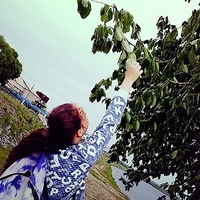
Каким правилам жанра следует у шекспира в сонете 113 от каких отступает?
 0
0
 0
0
Ответы на вопрос
 Внимание! Ответы на вопросы дают живые люди. Они могут содержать ошибочную информацию, заблуждения, а также ответы могут быть сгенерированы нейросетями. Будьте внимательны. Если вы уверены, что ответ неверный, нажмите кнопку "Пожаловаться" под ответом.
Внимание! Ответы на вопросы дают живые люди. Они могут содержать ошибочную информацию, заблуждения, а также ответы могут быть сгенерированы нейросетями. Будьте внимательны. Если вы уверены, что ответ неверный, нажмите кнопку "Пожаловаться" под ответом.

Ответ:
Шекспир в 113 сонете придерживается к правилу: три катрена и заключительное двустишие, рифмовка abad cdcd efef gg. Отступает от таких правил как: два катрена и три терцета и рифмовки: abba abba, abab abab и в терцетах: cde dcd, cde cde.
Объяснение:
 0
0
 0
0

Shakespeare's Sonnet 113: Genre Rules and Deviations
Shakespeare's Sonnet 113 follows the rules and conventions of the sonnet genre, but it also deviates from them in certain aspects. Let's explore the genre rules that Shakespeare typically adheres to in his sonnets and identify any deviations in Sonnet 113.
Genre Rules of Shakespearean Sonnets: Shakespeare's sonnets are written in a specific form known as the Shakespearean sonnet or the English sonnet. Here are the key characteristics of this sonnet form:
1. Structure: Shakespearean sonnets consist of 14 lines divided into three quatrains (four-line stanzas) and a final couplet (a two-line stanza). The rhyme scheme is typically ABAB CDCD EFEF GG.
2. Meter: The sonnets are written in iambic pentameter, which means each line has five pairs of unstressed and stressed syllables, totaling ten syllables per line.
3. Themes: Shakespeare's sonnets often explore themes of love, beauty, time, mortality, and the complexities of human emotions.
4. Volta: The sonnets usually contain a volta, or a turn, which occurs around the ninth line. The volta marks a shift in tone, perspective, or argument within the poem.
Deviation in Sonnet 113: Sonnet 113 follows the general structure and meter of a Shakespearean sonnet, adhering to the 14-line format and iambic pentameter. However, it deviates from the typical rhyme scheme of ABAB CDCD EFEF GG. Instead, it follows a unique rhyme scheme of ABAB CDCD EFG EFG.
Here is the rhyme scheme of Sonnet 113: ``` Those lines that I before have writ do lie (A) Even those that said I could not love you dearer (B) Yet then my judgment knew no reason why (A) My most full flame should afterwards burn clearer (B) But reckoning Time, whose millioned accidents (C) Creep in 'twixt vows, and change decrees of kings (D) Tan sacred beauty, blunt the sharp'st intents (C) Divert strong minds to the course of altering things (D) Alas! Why, fearing of Time's tyranny (E) Might I not then say, 'Now I love you best' (F) When I was certain o'er incertainty (G) Crowning the present, doubting of the rest? (E) Love is a babe, then might I not say so (F) To give full growth to that which still doth grow. (G) ```
In addition to the deviation in the rhyme scheme, Sonnet 113 also explores the theme of time and its effect on love, which is a common theme in Shakespeare's sonnets.
Conclusion: Shakespeare's Sonnet 113 follows the general rules and structure of the Shakespearean sonnet form, including the use of iambic pentameter and the exploration of themes related to love and time. However, it deviates from the typical rhyme scheme, using a unique pattern of ABAB CDCD EFG EFG. This deviation adds to the individuality and distinctiveness of Sonnet 113 within Shakespeare's sonnet collection.
 0
0
 0
0
Похожие вопросы
Топ вопросов за вчера в категории Геометрия
Последние заданные вопросы в категории Геометрия
-
Математика
-
Литература
-
Алгебра
-
Русский язык
-
Геометрия
-
Английский язык
-
Химия
-
Физика
-
Биология
-
Другие предметы
-
История
-
Обществознание
-
Окружающий мир
-
География
-
Українська мова
-
Информатика
-
Українська література
-
Қазақ тiлi
-
Экономика
-
Музыка
-
Право
-
Беларуская мова
-
Французский язык
-
Немецкий язык
-
МХК
-
ОБЖ
-
Психология
-
Физкультура и спорт
-
Астрономия
-
Кыргыз тили
-
Оʻzbek tili


























